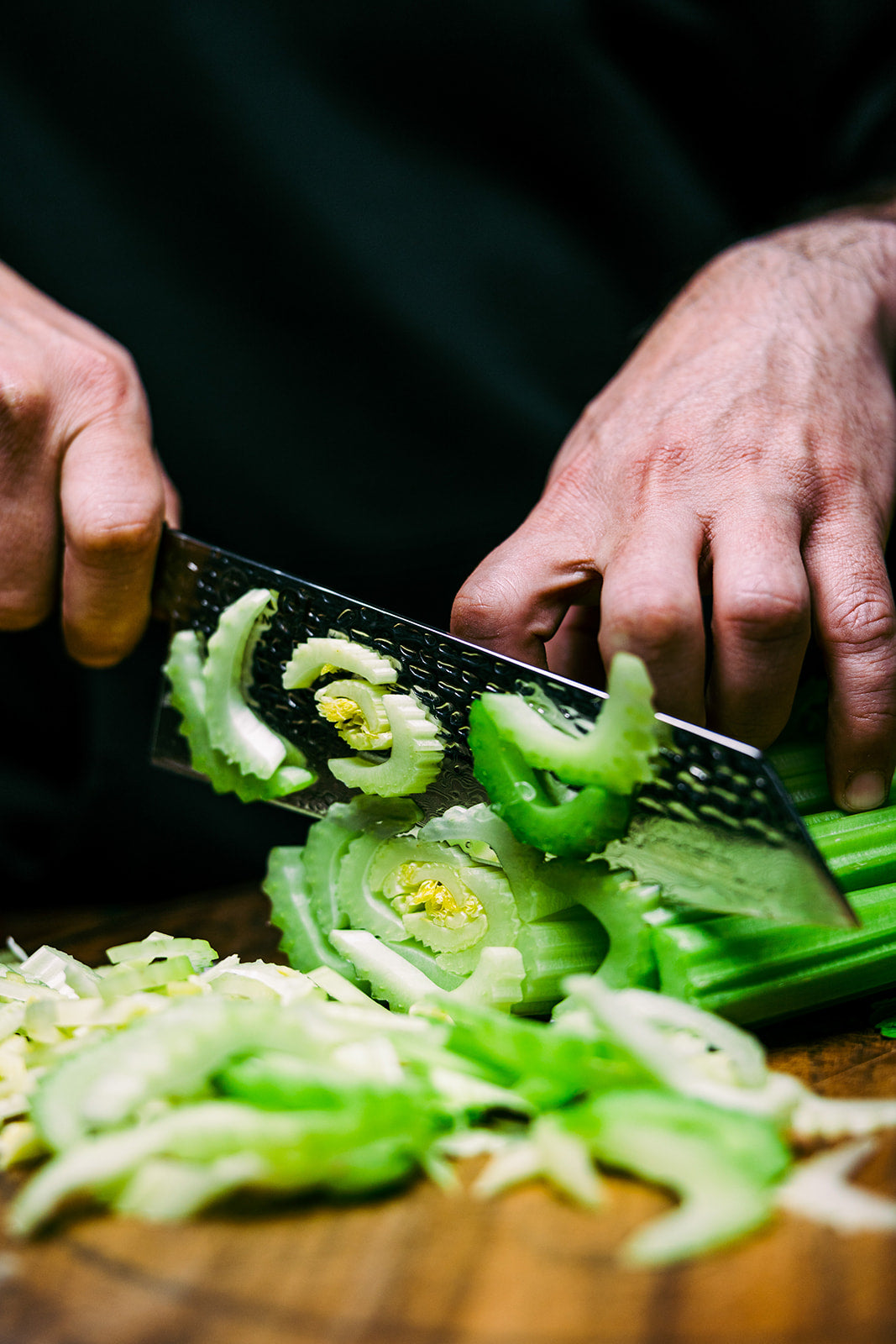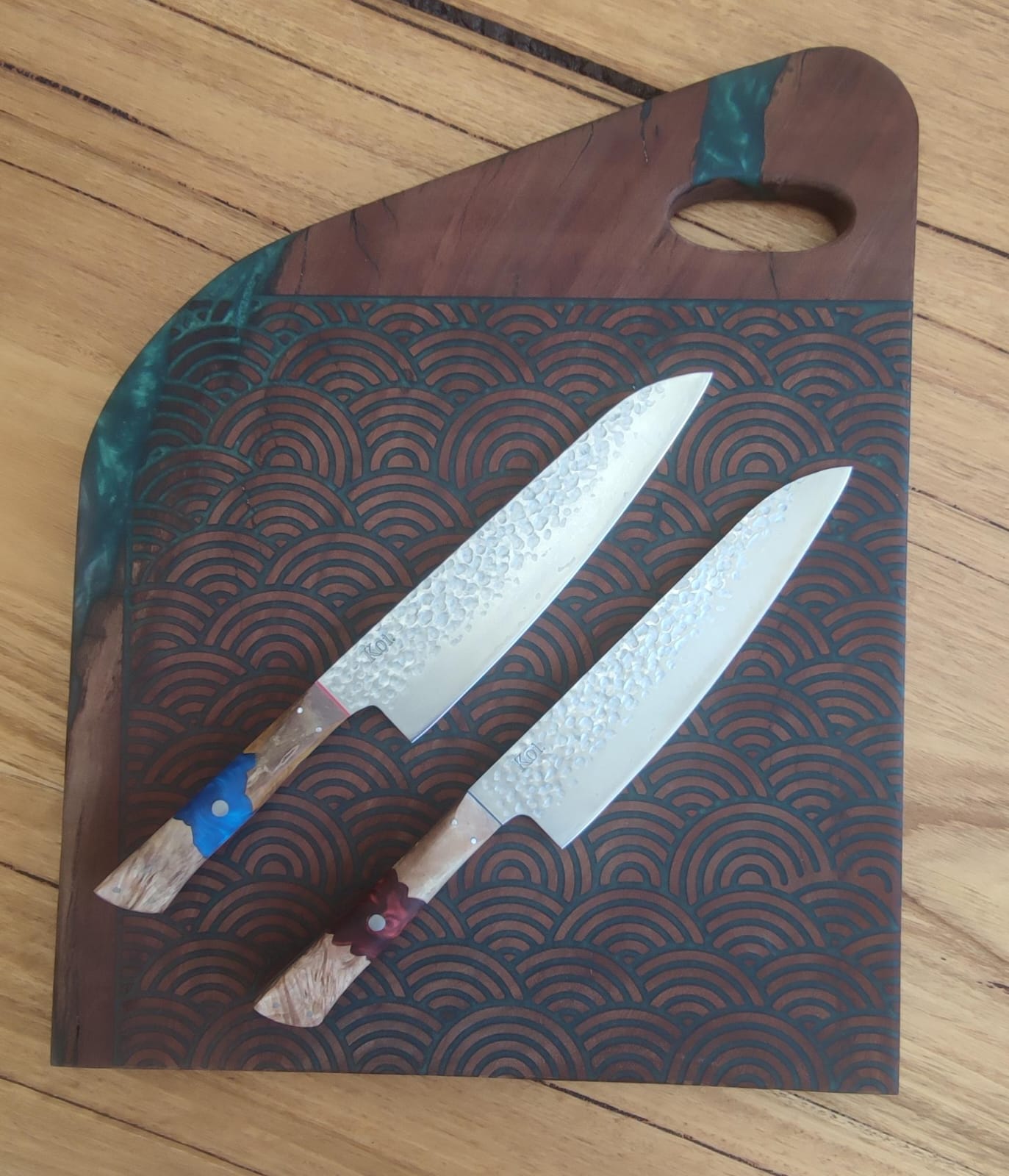Understanding the anatomy of a knife can be the difference between choosing a tool that suits your needs and ending up with one that falls short. This guide will delve into partial tang knives—a term often heard but not always understood. We'll discuss what exactly a partial tang is and why it matters in knife construction, as well as provide a comprehensive overview of the advantages and applications of these specialized tools.
What is a Partial Tang?
Partial tang refers to a construction style where the metal of the knife blade extends only partially into the handle rather than running its full length. This design choice impacts the knife's balance, weight, and overall durability.
A partial tang knife means that the metal blade does not extend the handle's full length. Instead, it terminates partway, leaving a portion of the handle without metal reinforcement. This construction differs from full-tang knives, where the metal extends the entire length of the handle, providing more strength and stability.
Anatomy of a Partial Tang Knife
In a partial tang knife, the blade typically extends into the handle for a certain distance, usually not exceeding halfway. This partial extension provides some structural support to the handle while allowing for design and weight distribution variations. Depending on the specific construction method, the handle is often attached to the tang using adhesives, pins, or rivets.
Types of Partial Tangs
Partial tang knives come in various designs, each offering different levels of support and durability.
1. Hidden Tang
A hidden tang is a partial tang where the metal extends into the handle but is concealed by surrounding materials, such as wood, plastic, or synthetic materials. This design provides a sleek appearance while still offering some structural support.
2. Rat-Tail Tang
The rat-tail tang is a narrow extension of the blade that tapers down into the handle, resembling the shape of a rat's tail. This type of partial tang is commonly found in inexpensive or decorative knives and may offer less stability than other tang designs.
3. Stick Tang
The stick tang, also known as a push tang, is a partial tang that extends into the handle without widening. This tang type is often found in traditional Japanese knives and requires careful craftsmanship to ensure proper balance and durability.
Advantages of Partial Tang Knives
1. Importance in Food Preparation Tasks
Every chef knows the value of agility and precision during food prep. Partial tang knives excel in this arena and offer a handy alternative to their bulkier counterparts. Whether you're julienning vegetables or finely mincing herbs, the lightweight construction of partial tang knives ensures effortless maneuverability, helping you achieve consistent results every time.
2. Enhanced Maneuverability
The streamlined design and balanced weight distribution enhance maneuverability for intricate cutting techniques, such as chiffonade or brunoise, where precision is paramount.
3. Delicate Food Handling
When working with delicate foods like fish or soft fruits, the gentle touch of a partial tang knife can make all the difference. Unlike heavier knives that can crush or bruise delicate ingredients, partial tang knives provide precise control.
4. Budget-Friendly
Contrary to popular belief, affordability doesn't have to mean compromising on quality. Own a budget-friendly partial tang knife that delivers exceptional performance and durability.
Applications Where Partial Tang Knives Excel
Food Preparation Tasks
Partial tang knives are exceptionally suited for various food preparation tasks like slicing and dicing vegetables, allowing for swift and controlled movements. When julienning carrots or mincing garlic, these knives provide the maneuverability required for efficient chopping.
Trimming and portioning meats is another area where partial tang knives excel. Their dexterity makes them ideal for intricate tasks like deboning chicken or trimming excess fat from cuts of meat.
Garnish and Decoration Work
Garnish and decoration work is an art form that adds flair and visual appeal to dishes, transforming them from mere sustenance to culinary masterpieces. Partial tang knives play a crucial role in this process, offering the precision and control needed to execute decorative cuts.
Intricate Carving Techniques
Carving intricate designs from fruits and vegetables is a hallmark of garnish and decoration work. Popular carving techniques include:
- Vegetable Flowers: Carving vegetables like carrots or radishes into delicate floral shapes adds a touch of elegance to salads and platters.
- Citrus Zest Twists: Partial tang knives are perfect for creating delicate twists of citrus zest to garnish cocktails or desserts.
- Butter Sculptures: Sculpting butter into intricate shapes requires precision and control, which partial tang knives provide effortlessly.
Fine Detailing for Presentation
Fine detailing is another essential aspect of garnish and decoration work, where partial tang knives truly shine. These knives make cuts and delicate embellishments that elevate the visual appeal of a dish. Various types of decorative cuts include:
- Julienne: Creating thin, uniform strips of vegetables like carrots or bell peppers adds texture and visual interest to dishes.
- Chiffonade: Finely slicing leafy greens like basil or mint into thin ribbons enhances their flavor and makes for an elegant garnish.
On-the-Go Culinary Needs
Partial tang knives are versatile in the kitchen and essential if you're camping in the wilderness or enjoying a picnic in the park. These knives offer convenience and functionality in portable food preparation. Their lightweight design makes them easy to carry and use, allowing you to easily prepare meals in outdoor settings.
Similarly, for picnics and portable food preparation, partial tang knives offer the versatility to slice, chop, and dice ingredients on the fly, ensuring you can enjoy delicious meals wherever your adventures take you.
Summary
When selecting a partial tang knife, there are several key factors to keep in mind to ensure you find the perfect match for your culinary needs. Firstly, consider the blade material and sharpness. Opt for high-quality materials like stainless steel for longevity and sharpness retention.
Next, pay attention to handle design and comfort. Look for ergonomic handles that provide a comfortable grip, especially if you'll use the knife for extended periods. Assess your frequency of use and durability requirements—are you a casual cook or a professional chef?
Finally, match the knife features to specific tasks. Choose a knife that suits the tasks you'll perform most frequently in the kitchen.




